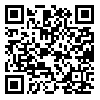year 8, Issue 2 (Summer 2020)
Ann Appl Sport Sci 2020, 8(2): 0-0 |
Back to browse issues page
Faculty of Sports Science, University of Babylon, Babylon, Iraq , dr_raeed@yahoo.com
Abstract: (3191 Views)
Background. The game of chess, which is viewed as a symbol of intellectual prowess, is a valuable educational tool which can improve cognitive behavior such as thinking models, etc.; but the effects of thinking strategy such as double thinking strategies (DTS) and lateral thinking strategies (LTS) on the chess performance is not investigated.
Objectives. This study aimed to measure the effects of the LTS and DTS on the chess positions and their performance time.
Methods. Fifty-six university students selected 91 volunteer participants and divided randomly into two equal groups (n=28) of LTS and DTS. Two educational training sessions per week conducted for eight weeks (16 sessions for each strategy totally). Training sessions held to educate consisted of four and three steps for LTS and DTS, respectively.
Results. Both LTS and DTS increased the chess position significantly, but DTS could improve it substantially more than LTS (p<0.001). Also, LTS and DTS decreased performance time significantly, but DTS could more reduce it significantly (p<0.001).
Conclusions. However, both strategies improved both the chess position and performance time of the players, but DTS could improve it more than LTS.
Objectives. This study aimed to measure the effects of the LTS and DTS on the chess positions and their performance time.
Methods. Fifty-six university students selected 91 volunteer participants and divided randomly into two equal groups (n=28) of LTS and DTS. Two educational training sessions per week conducted for eight weeks (16 sessions for each strategy totally). Training sessions held to educate consisted of four and three steps for LTS and DTS, respectively.
Results. Both LTS and DTS increased the chess position significantly, but DTS could improve it substantially more than LTS (p<0.001). Also, LTS and DTS decreased performance time significantly, but DTS could more reduce it significantly (p<0.001).
Conclusions. However, both strategies improved both the chess position and performance time of the players, but DTS could improve it more than LTS.
Full-Text [PDF 583 kb]
(1671 Downloads)
APPLICABLE REMARKS
APPLICABLE REMARKS
Training of the double thinking strategy can be proper for developing the abilities of the chess player, such as improvement of chess position and decreasing the performance time.
Type of Study: Original Article |
Subject:
Physical Education Learning
Received: 2019/07/7 | Accepted: 2019/09/27
Received: 2019/07/7 | Accepted: 2019/09/27
References
1. Costa AL, Kallick B. Learning and leading with habits of mind: 16 essential characteristics for success: ASCD; 2008.
2. Mechner F. Chess as a Behavioral Model for Cognitive Skill Research: Review of Blindfold Chess by Eliot Hearst and John Knott. J Exp Anal Behav. 2010;94(3):373-86. [DOI:10.1901/jeab.2010.94-373] [PMCID]
3. Sala G, Gobet F. Do the benefits of chess instruction transfer to academic and cognitive skills? A meta-analysis. Educ Res Rev. 2016;18:46-57. [DOI:10.1016/j.edurev.2016.02.002]
4. Jafari HR. A Content analysis of science textbooks of Elementaryschool in Iran based on the components of Edward bono's thinking. New Thoug Educ. 2018;14(3):137-62.
5. Fathi AE, Badri GR, Ahrari G. The effects of bono's six hats technique on students'critical thinking and creativity. Sci Jl Manage Syst. 2014;4(1):159-88.
6. Thinking Strategies for learners: A guide to PEBC's professional development in reading, writing, mathematics, and information literacy 2019 [Available from: http://lnnk.in/7Jh.
7. van Harreveld F, Wagenmakers EJ, van der Maas HL. The effects of time pressure on chess skill: an investigation into fast and slow processes underlying expert performance. Psychol Res. 2007;71(5):591-7. [DOI:10.1007/s00426-006-0076-0] [PMID]
8. Ericsson KA. Skilled memory and expertise: mechanisms of exceptional performance. In: Klahr D, Kotovsky K, editors. Complex information processing: The impact of Herbert A Simon. Hillsdale: Erlbaum; 1988. [DOI:10.21236/ADA193829]
9. Grotzer TA, Perkins DN. Teaching Intelligence: A Performance Conception. Handbook of Intelligence. USA: Cambridge University Press; 2000. p. 492-516. [DOI:10.1017/CBO9780511807947.023]
10. De Bono E. Lateral Thinking: An Introduction: Random House; 2014.
11. De Bono E. New think: The use of lateral thinking in the generation of new ideas: Avon Books; 1968.
12. Banakar R. Double-Thinking and Contradictory Arrangements in Iranian Law and Society. Diges Middle East Stud. 2018;27(1):6-33. [DOI:10.1111/dome.12123]
13. The Sufi challenge to Iran's clergy 2019 [Available from: http://lnnk.in/7Xh.
14. Cloete C, Kemm K, editors. Chess as a logic and lateral thinking training intervention for mathematics and science education in south africa. Inted2010 Proceedings; 2010: IATED.
15. Jabr DHS. The impact of mini-game exercises in the double thinking and behavior of the football planners of the halls of the players of the Revolution of the twentieth. J Sport Sci. 2018;10(35):76-90.
16. Seel NM. Learning and Thinking. Encyclopedia of the Sciences of Learning2012. p. 1797-9. [DOI:10.1007/978-1-4419-1428-6_584]
17. Abu Jado S, Noufal M, ed TtTttatpt. Amman: Al-Massirah Publishing House; 2017.
18. Yas A, Al-timeme M. Measurement of double-thinking among university students. J Educ Psychol Res. 2013;10(38):1-27.
19. Darib M. Lateral thinking and problem solving skills for distinguished and ordinary school students. Kufa Stud Center J. 2014;1(34):308-81.
20. Jwad W. Double Thinking and its role in promoting the spirit of tolerance among university students. J Educ Psychol Res. 2015;12(45):143-72.
21. Bart WM. On the effect of chess training on scholastic achievement. Front Psychol. 2014;5:762. [DOI:10.3389/fpsyg.2014.00762] [PMID] [PMCID]
22. Vaci N, Bilalic M. Chess databases as a research vehicle in psychology: Modeling large data. Behav Res Methods. 2017;49(4):1227-40. [DOI:10.3758/s13428-016-0782-5] [PMID] [PMCID]
23. Schaigorodsky AL, Perotti JI, Billoni OV. A Study of Memory Effects in a Chess Database. PLoS One. 2016;11(12):e0168213. [DOI:10.1371/journal.pone.0168213] [PMID] [PMCID]
24. Fonagy P. There is Room for Even More Doublethink: The Perilous Status of Psychoanalytic Research. Psychoanal Dialogues. 2013;23(1):116-22. [DOI:10.1080/10481885.2013.754276] [PMID] [PMCID]
25. De Bono E. Handbook for the positive revolution: London: Viking; 1991.
| Rights and permissions | |
 |
This work is licensed under a Creative Commons Attribution-NonCommercial 4.0 International License. |





